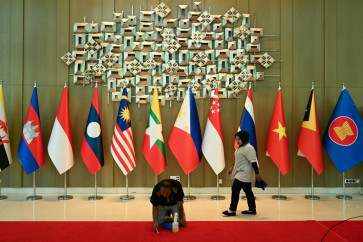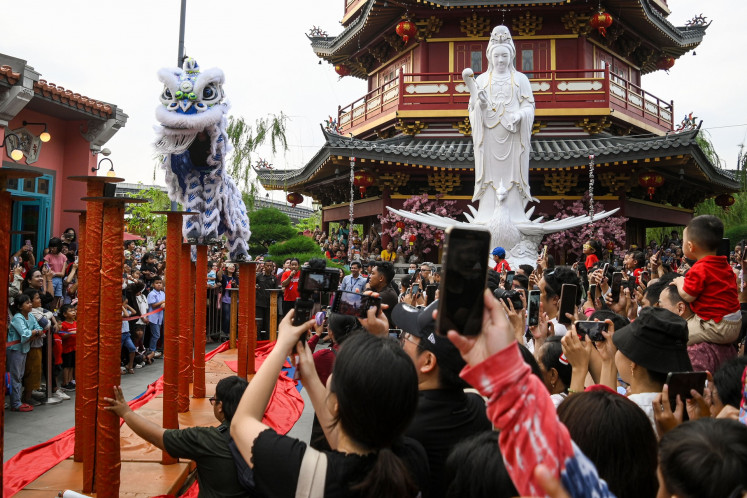City should preserve Chinatown: Experts
The Jakarta Administration should strictly control development in Glodok, West Jakarta to preserve what is left of the city's Chinatown, an expert in Chinese historical buildings said
Change text size
Gift Premium Articles
to Anyone

T
he Jakarta Administration should strictly control development in Glodok, West Jakarta to preserve what is left of the city's Chinatown, an expert in Chinese historical buildings said.
Indonesia Architecture Documentation Center head Djauhari Sumintadihardja said Thursday that the city's Chinatown, the commercial area of Glodok which was developed before the Dutch colonial era of the 17th and 18th centuries, has lost most of the houses with Chinese architecture and is losing the charm of old Chinatown.
"The city administration does not list all the buildings in the area as protected heritage buildings, causing modern buildings to be built side by side to the old buildings with Chinese architecture," Djauhari said.
"Who would believe that the current Jakarta Chinatown is a heritage site from the 17th and 18th centuries when they see conditions now?" he asked.
He said that development in Chinatown should be strictly controlled, like in the posh residential area of Menteng, Central Jakarta.
"Some areas in Glodok can still be rescued and conserved. The Pintu Kecil area in Glodok still has old Chinese houses," he said.
Djauhari was speaking during a panel discussion on the Preservation of Old Chinese Heritage Sites. The discussion was part of the Festival Peranakan, which is running from Jan. 9 to Feb. 1, in conjunction with the Chinese New Year.
Peranakan is a term used for the descendants of the early Chinese immigrants to Indonesia and Malaysia, who have partially adopted indigenous customs as part of their acculturation with indigenous communities.
Under the 1992 Law on Heritage Landmarks, buildings older than 50 years are considered to have historical value. Under the law, owners should publicly list the building as a heritage site and protect its architecture.
However, a lack of law enforcement has allowed many old buildings to be torn down or renovated in modern architecture.
Historian Mona Lohanda from the University of Indonesia said that the Chinese settlers contributed a lot during the construction of Old Batavia in the Dutch colonial era.
"A lot of Chinese people were hired to construct the Dutch office buildings which are now the Fatahillah Museum and the Archive building, giving a Chinese touch to them," she said.
The Fatahillah Museum was the former Batavia town hall and the Archive Building was the house of former Governor General Reinier de Klerk. Both are located in Glodok.
"The color of the Reinier de Klerk building was red and gold because of the Chinese influence," she added.
W.P Zhong, an expert on Chinese Architecture from Tarumanegara University, said that the transformation of the city's Chinatown was in part because some of the Peranakan Indonesian community have lost their appreciation for their Chinese heritage.









